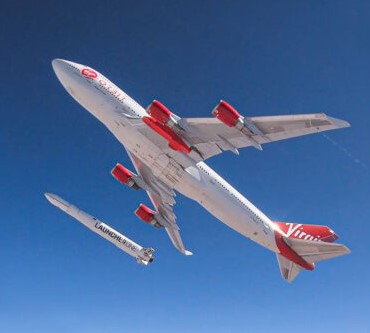
Updated March 20, 10:00am GMT to correct launch vehicle location (within C17 rather than underslung).
Aerospace startup Astraius has agreed a key new partnership as it plans its first “air launch” of a low-earth orbit (LEO) satellite from Scotland in 2024, using a military transport plane, rather than a vertical launch pad.
Astraius is teaming up with US aerostructure specialist Spirit AeroSystems ahead of the launch, with the latter to help provide “system components and key processes” the two said in a press release on March 17.
Astraius, which has recruited a former US Air Force colonel as its chief technology officer and a former head of the Royal Navy as its chairman, plans to deploy a C-17 transport aircraft to help launch satellites.
It will use an “air launch” technique that involves deploying a launch vehicle that is carried internally within the C17, instead of an expensive vertical launch, which uses huge amounts of fuel and local infrastructure.
The agreement comes after the UK’s 2021 National Space Strategy outlined plans to deliver satellite launches from UK spaceports by 2022 as it looks to recover and build on space-based capabilities it lost following Brexit.
Follow The Stack on LinkedIn

This ambition was not met and Astraius is entering an exciting and rapidly growing, but also challenging market.
Virgin Orbit on March 16 for example announced a “company-wide operational pause” after a failed UK air launch attempt in January.
Virgin Orbit wants to conserve capital while it “conducts discussions with potential funding sources and explores strategic opportunities,” according to a regulatory filing shared by Bloomberg.
Atriaius’ CEO Kevin Seymour, told The Stack: “[Horizontal launches provide the ability to] launch above weather, flexibly and with totally different and smaller ground infrastructure.
"Our air launch system is using unmodified aircraft – the C17. This is a proven platform with some 40+ launches to date (with no failures) by the US Military. We will be providing ‘responsive launch’ capability, allowing us to schedule and launch with dramatically shorter lead times and costs compared to other providers and certainly, vertical operators. Horizontal Launch gives great access to a wide variety or orbits and inclinations than land based and is truly responsive, go anywhere anytime with launch times measured in days not months."
Astraius and Spirit AeroSystems deal a boost for Prestwick
Both Astraius and Spirit AeroSystems have facilities at Prestwick Spaceport, a partnership between Glasgow Prestwick Airport and South Ayrshire Council, which aspires to become Europe’s leading air launch hub.
Spirit AeroSystems is a significant industry player which reported revenues of $5 billion for 2022, up 27% from 2021, a figure it attributed to “higher production deliveries on the Boeing 737 and Airbus A320 and A220, as well as increased Aftermarket and Defense and Space revenue” and Astraius CEO Seymour said the MoU was “the start of a long-term relationship as they support us on the journey to first launch. They are also a strategic partner at Prestwick and part of the emerging ‘space cluster’ in and around the Spaceport. We expect to see a growing collaboration with them as we prepare our launch vehicle and the supporting operations.”
He added: “We were also sorry to learn of the developments at Virgin Orbit this week. Astraius has a fundamentally different business model, using existing technology and a proven launch platform.”
With huge numbers of LEO satellites planned (SpaceX Starlink aims to get 42,000 into orbit alone, with OneWeb planning to launch 7,088 and Amazon Kuiper a further 3,236 by the end of the decade), space authorities globally are looking for ways to speed up delivery and reduce cost and impact of the launches.
As Astraius prepares for its launch, other British companies are planning unique LEO satellite payloads.
BAE Systems for example says it is ready to launch its first “multi-sensor satellite cluster” into low Earth orbit in 2024 to deliver “high-quality information and intelligence in real time from space to military customers.”
The satellites will use a range of sensors to collect visual, radar and radio frequency data. Uniquely, says BAE, the four-satellite cluster will be able to be fully reconfigured whilst in orbit “in the same way a smartphone installs a new app” and will crunch data on the satellites itself on powerful edge hardware to avoid the bottlenecks common in the industry, which typically requires terabytes of data to be transferred to Earth before being processed and which is “reliant on intermittent RF links and the availability of suitable ground stations.”
